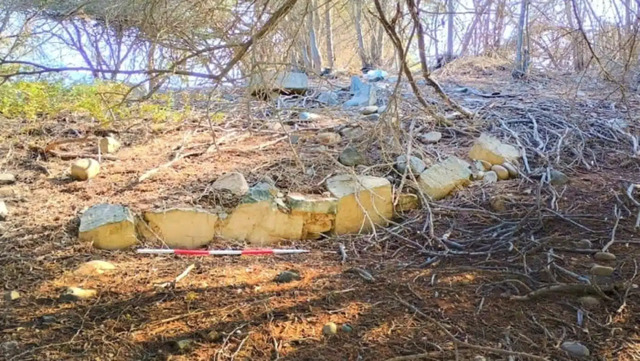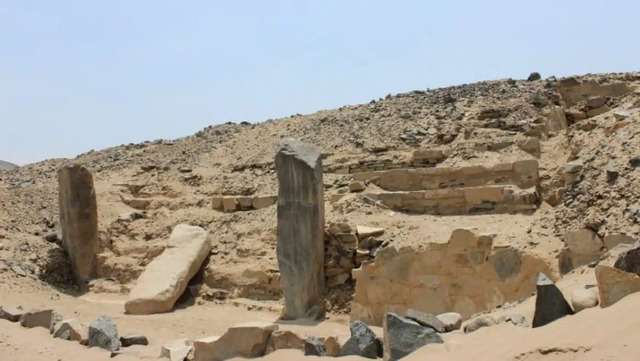In the heart of Peru’s Supe Valley, an ancient mystery has been uncovered—an extraordinary pyramidal structure at Chupacigarro, hidden for millennia beneath thick vegetation. This remarkable find sheds new light on the Caral civilization, one of the oldest urban societies in the Americas, offering a glimpse into their advanced architectural achievements and strategic urban planning. As archaeologists delve deeper into this discovery, they are uncovering not just stones and structures, but a rich history that connects the ancient past to the present.
Historical Context: The Caral Civilization and Its Influence
The Caral civilization, which flourished between 3000 and 1800 BCE, is widely regarded as one of the most significant pre-Columbian cultures in the Americas. Located in the Supe Valley, Caral was a key center of urban development, influencing neighboring regions with its advanced agricultural practices, urban planning, and monumental architecture. Caral’s remarkable achievements, such as its complex irrigation systems and large-scale ceremonial buildings, set it apart as a leader in early Andean culture.


Chupacigarro, situated just a kilometer west of the Sacred City of Caral-Supe, was a vital part of this network. As the site of the recent discovery, it is likely that Chupacigarro served as an extension of Caral, furthering its influence and serving as a strategic location along the natural communication route connecting the Supe Valley with the Huaura coast. The pyramidal structure found at Chupacigarro adds an intriguing layer to the archaeological story of Caral, expanding our understanding of how this civilization developed and interacted with its environment.
Video
Watch this video from Ancient Architects to explore the Pyramid City of Caral in Peru, home to the oldest civilization in the Americas.
The Chupacigarro Discovery: Excavating the Pyramidal Structure
The discovery of the pyramidal structure at Chupacigarro was the culmination of years of archaeological work, led by Dr. Ruth Shady and a multidisciplinary team from the Caral Archaeological Zone. Initially hidden beneath a thick layer of overgrown trees and vegetation, the structure was revealed only after careful excavation. Once the team cleared the dense huarango trees, they uncovered stone walls forming at least three superimposed platforms, which together created the distinctive pyramidal shape.

The construction of this structure closely mirrors the monumental works found at Caral, with large vertically placed stones marking the building’s corners and a central staircase leading to the top. The pyramidal form, which is characteristic of Caral architecture, suggests that this was not merely a functional building but likely a ceremonial or public space. The discovery of this previously unknown structure underscores the sophistication of Caral’s architectural style and its influence on surrounding settlements.
Geographical Location and Strategic Importance
Chupacigarro’s location, nestled in a small ravine, highlights its strategic importance within the Supe Valley. The site is positioned in such a way that it connects the lower Supe Valley with the Huaura coastline, facilitating communication and trade between the two regions. This location, which would have provided access to coastal resources such as seafood, further emphasizes the importance of Chupacigarro in Caral’s larger urban network.
The positioning of the pyramidal structure within this ravine also speaks to the careful planning and intentional design of the Caral civilization. Its seclusion suggests that Chupacigarro may have served as a ceremonial or religious center, separate from the bustling commercial activities of Caral itself. The site’s strategic placement and its connection to the broader Supe Valley settlement system indicate that Chupacigarro played a significant role in the cultural and social landscape of the time.

The Geoglyph of a Human Head: Symbolism and Cultural Importance
Among the most striking features of Chupacigarro is the large geoglyph of a human head in profile, designed using angular stones. Measuring 62.1 by 30.3 meters, the geoglyph is visible only from specific angles within the settlement. This artistic feature, made in the Sechín style, provides valuable insight into the religious or cosmological beliefs of the Caral civilization.
Archaeologists believe that the geoglyph likely had a ceremonial function, possibly tied to the Caral civilization’s religious rituals or worldview. Its careful placement within the settlement suggests that it may have been an important marker within the broader cultural and ritual landscape of the region. The depiction of the human head, with a mouth open and hair seemingly blown by the wind, may symbolize a connection to the divine or the elements, offering further clues about how the Caral people understood their relationship with nature and the cosmos.
The Architectural Landscape of Chupacigarro
Chupacigarro is home to at least 12 known structures, most of which are public or ceremonial in nature. These buildings are arranged around a central space, with the Main Building featuring a sunken circular plaza, a hallmark of Caral architecture. The discovery of the pyramidal structure adds to the diversity of architectural styles at Chupacigarro, highlighting the complexity of the settlement’s urban planning.
The variety in the size, orientation, and formal characteristics of the buildings at Chupacigarro suggests that the settlement served multiple functions. Some structures may have been used for ceremonial purposes, while others likely served as administrative or social spaces. The relationship between these buildings and the broader Caral-Supe urban network reveals the interconnectedness of settlements in the region, with each site playing a specific role within the larger cultural framework.

Innovative Construction Techniques and Preservation
One of the most remarkable aspects of the Chupacigarro discovery is the preservation of the site’s architecture. The use of natural materials such as stone and mud brick, combined with the site’s location within a ravine, helped protect the structures from the elements. Archaeologists have also employed advanced preservation techniques to safeguard the delicate remnants of the pyramidal structure and surrounding buildings.
The excavation process at Chupacigarro has been carefully managed to minimize disruption to the site and ensure that the buildings are preserved for future study. Digital preservation methods, such as 3D scanning, are being used to create detailed records of the site’s architecture, ensuring that these valuable cultural assets are accessible for research and public education.
The Ongoing Excavations and Future Research
The Chupacigarro excavation is ongoing, with archaeologists continuing to uncover more about the site’s history and significance. Researchers are working to map the entire settlement and analyze the various structures in detail to gain a deeper understanding of their function and meaning. The pyramidal structure will undergo further study to determine its exact role within the settlement, and future excavations may reveal more about the cultural practices and daily life of the Caral civilization.
The discovery of the pyramidal structure at Chupacigarro has opened up new avenues for research into the Caral civilization’s urban planning, architecture, and social structure. It is clear that Chupacigarro, with its strategic location and diverse architectural features, played a key role in the development of one of the Americas’ earliest urban societies.
Video
Check out this video to uncover the discovery of a 5,000-year-old sacred site and pyramid structure in Peru, revealing ancient mysteries.
Conclusion: A Glimpse into the Ancient Past
The recent discovery of the pyramidal structure at Chupacigarro provides invaluable insights into the Caral civilization and its sophisticated architectural and urban planning. This find contributes to our understanding of ancient Andean cultures and offers a glimpse into a society that was deeply connected to its environment and the broader cultural landscape of the time. As excavations continue, it is likely that more discoveries will be made, shedding further light on the lives and beliefs of the people who built Caral and its surrounding settlements.
By preserving and studying these ancient sites, we can continue to uncover the stories of the past, ensuring that the achievements of the Caral civilization are remembered and celebrated for generations to come.



